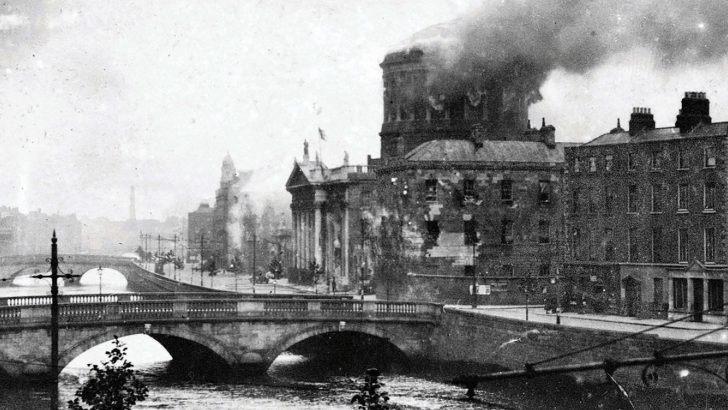Between two Hells: the Irish Civil War
by Diarmaid Ferriter (Profile Books, €20/€24.69)
Felix M. Larkin
How does a nation mark the centenary of a civil war? This is a problem which we in Ireland have to confront in 2022. Prof. Diarmaid Ferriter’s advice in this book is that we “need to factor in restraint” and seek to “understand and contextualise” the positions of the warring parties and “humanise their dilemmas and the deadly consequences of their decisions”. That is the spirit in which his book is written.
The book is in two parts. The first is a comprehensive review of the existing literature on the Irish Civil War, with the addition of material gleaned from the pension files in the Irish Military Archives. The second part draws on these files to examine the miserable, poverty-stricken later fate of many of those who fought in the Civil War and their dependents, and it also discusses the lingering influence of the Civil War divisions on Irish politics in the decades afterwards.
Neither side is favoured in this analysis. While acknowledging that public opinion was generally pro-Treaty (if only because of a desire for peace), the book accepts at face value the good faith of those on both sides of the conflict. It also reveals how personal relationships forged as comrades in arms during the Easter Rising and the War of Independence often triumphed over Civil War divisions, despite bitter rhetoric in the political arena.
Remarkable
Perhaps the most remarkable aspect of the post-Civil War years is that the defeated side was able to win a general election and form a government within ten years of the cessation of the conflict, with the acquiescence of their opponents.
By his constitutional manoeuvres in government from 1932 onwards, Éamon de Valera showed that those who favoured the Treaty had been right in asserting that it provided “the freedom to achieve freedom”.
Today, with Fianna Fáil and Fine Gael working together in relative harmony in a coalition government, we can reasonably claim that the Civil War split in Irish politics is now a thing of the past. Prof. Ferriter sees Alan Dukes’ so-called ‘Tallaght Strategy’ in 1987 – pledging Fine Gael support for the incoming Fianna Fáil government when “the government is moving in the right direction” – as “the beginning of the end of Civil War politics”.
One point that Prof. Ferriter emphasises in his book – and it is an argument likely to loom large when we mark the centenary of the Civil War next year – is that, though “the rhetoric it generated was grandiose”, the Irish Civil War was actually a “small-scale” affair. He calculates the death toll at about 1,400, as compared to 36,000 deaths in the Finnish Civil War in January to May 1918.
We should not, however, be too self-congratulatory about this. Proportionately, the Civil War was bloodier than the War of Independence. The recently-published The Dead of the Irish Revolution records 2,346 fatalities in the War of Independence, but the Civil War was of much shorter duration (June 1922 to April 1923). Moreover, there were appalling atrocities committed by both sides – and indeed even many supporters of the Treaty had reservations about the extra-judicial executions which sullied their constitutional credentials.
Final chapter
In the final chapter of the book, Prof. Ferriter quotes the young eco-politician, Saoirse McHugh, as saying “I don’t care who did what during the Civil War”. Most of us today would share that view, I think – but can we preserve such indifference during the period of the centenary, or will the memory of it revive old tensions which really have no place in modern Ireland? Only by trying to understand the events of the Civil War can we hope to avoid renewed recrimination, and this book makes a valuable contribution to that.


 Dark and lawless days in Ireland: the Four Courts on fire at the end of the Civil War siege
Dark and lawless days in Ireland: the Four Courts on fire at the end of the Civil War siege 